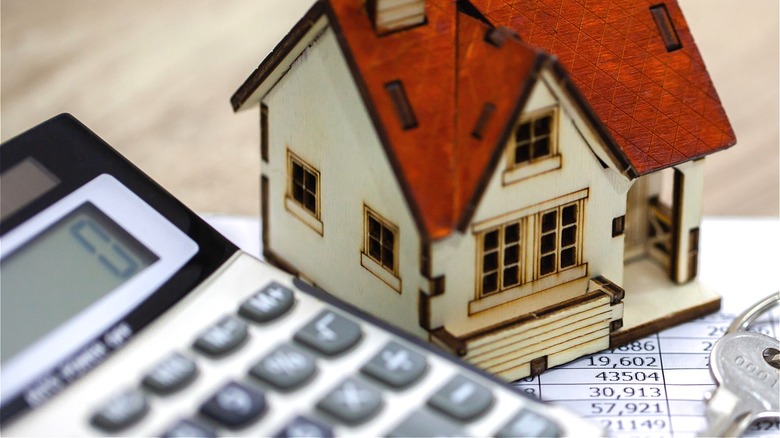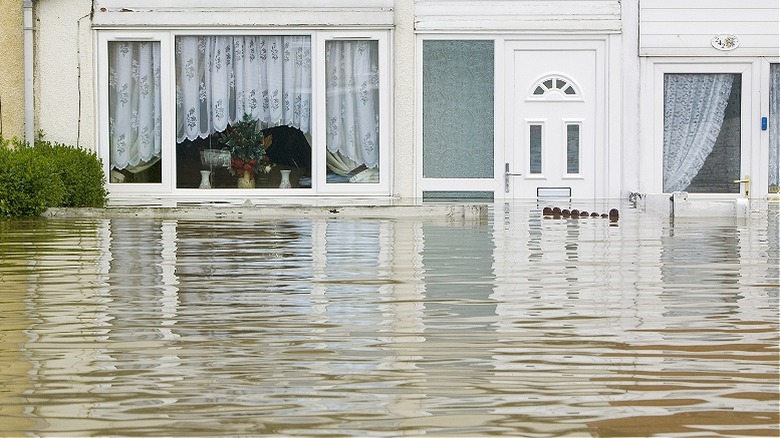How To Determine Whether You Have Enough Homeowners Insurance Coverage
Homeowners insurance has increasingly become an important consideration for both homeowners and would-be buyers alike. With insurance companies dropping coverage in states, skyrocketing rate hikes, and climate change-fueled weather events making coverage more important than ever, it can be difficult to navigate today's policies. For starters, homeowners insurance is one of the top things insurance companies don't want to cover anymore, so depending on your geographic location, you might have a harder time finding a company to provide coverage. On top of that, Realtor Magazine predicts homeowners can expect a 6% increase in their insurance premiums in 2024. This doesn't even include the 20% increase that occurred over the previous two years.
However, once you do have a policy, determining whether or not it provides enough coverage for your home can be another headache altogether. With different policy limits, coverage requirements, as well as categories, you might find yourself wondering how to ensure your policy coverage is what you need. One place to start is gaining a general understanding of each of the categories included in your policy. Beyond this, you can also research the types of insurance claims that might have been filed on your home in the past by using a Comprehensive Loss Underwriting Exchange, or CLUE, report. Remember that, on the whole, insurance companies are banking on NOT having to pay out on your policy, so setting yourself up for as much success as possible in the event of a claim is key.
Understanding your coverage
Homeowners coverage can include a lot of different elements of your home. One of the things you will see listed on your policy is your dwelling coverage, which covers the actual physical structure of your property (this can include your home, porch, yard, and pool). It's important that your coverage adequately covers the total cost it would be to repair your home, keeping in mind that rebuild costs will probably go up every year (note that this is part of why homeowners insurance is affecting the housing market). Similarly, your home's market value could be quite a bit more than your dwelling coverage. Also, coverage for other structures, like detached garages, gazebos, or sheds, is separate and typically limited to 10% of your policy's dwelling coverage.
Another consideration is your personal property coverage. The simplest way to calculate this is to create a full home inventory; that is, catalog everything in your home (and anything you keep in a storage unit) and maintain this list as you acquire new items. This is especially important for more expensive items. The value of your entire inventory is how much personal property coverage you'll need. Oftentimes, the personal property coverage offered through your homeowners policy will be linked to your total dwelling coverage, and, typically, the personal property coverage amount will be half the dwelling coverage amount. Keeping your own inventory allows you to determine if your policy amount is higher or lower than what you actually need.
Do you need insurance add-ons?
Increasingly, insurance companies are separating certain coverages and making them available as add-ons (aka endorsements) to your existing coverage. This way, things like flood insurance require consumers to proactively pay more for that particular coverage. Since many people can't afford the additional financial outlay, or they aren't even aware that they need to have this additional coverage in order to be protected, oftentimes this add-on strategy allows insurance companies to be off the hook for damages.
Requiring this additional add-on coverage for specific natural disasters is one way that insurance companies play the odds they won't actually have to pay for catastrophic damage in the event of a natural disaster. This goes for all manner of climate change-fueled disaster types, including flood, fire, earthquake, and even wind and hail. (That said, it could be worth avoiding property in some geographic areas altogether, given their vulnerability to climate hazards.)
Other potential policy add-ons can include something known as umbrella coverage. This can be significant when it comes to things like your policy's personal liability coverage (aka your financial responsibility for any injury that might occur at your residence), and even rental unit coverage. In general, umbrella coverage provides even more coverage beyond existing policy limits. However, it can be significantly more expensive to add on to already expensive homeowners policies so, here, approach this add-on only if there is a high chance you might need to use it. As always, research multiple insurance providers to find the best policy for your needs.


